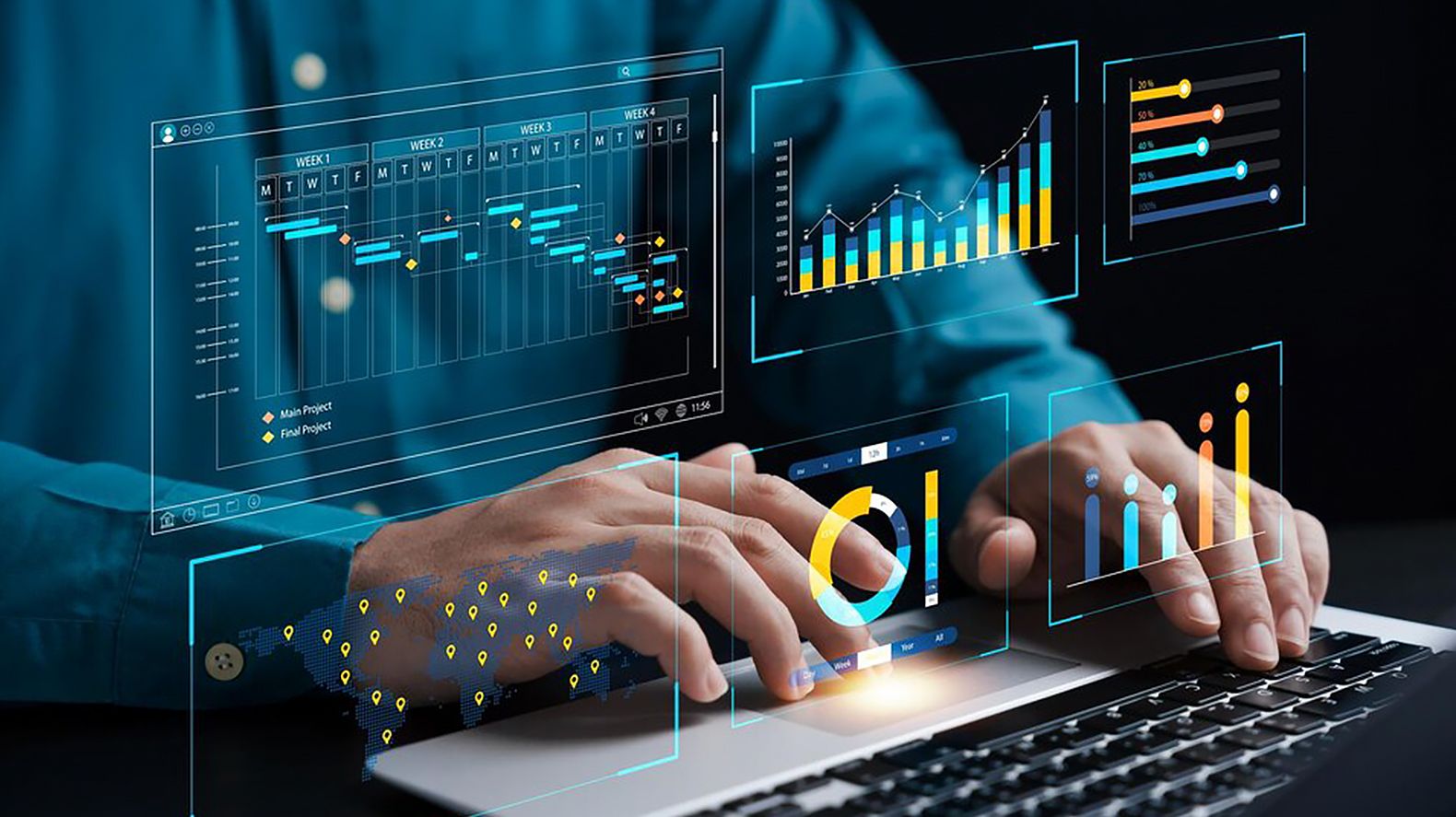Descriptive vs. Predictive Analytics: Understanding Their Relationship

Every day, businesses produce enormous volumes of data. Making decisions requires an understanding of and efficient use of this data. Predictive and descriptive analytics are essential for turning unprocessed data into insights that can be put to use. These analytics methods complement each other, enabling businesses to make informed choices based on past trends and future projections. That is why organizations that use both approaches gain a competitive advantage by understanding past behaviors and anticipating future outcomes.
This article explores the relationship between descriptive and predictive analytics, highlighting their differences, applications, and how AI-driven analytics enhances their effectiveness. By the end, you will understand how these two forms of analytics work together to improve business intelligence and decision-making.
Understanding Descriptive Analytics
Analyzing historical data to provide a summary of past events is known as descriptive analytics. It looks for trends, patterns, and insights in historical data. In order to make well-informed judgments regarding future strategies, businesses utilize descriptive analytics to analyze performance data, obtain insight into their operations, and analyze historical trends.
Furthermore, the capacity of descriptive analytics to paint a clear picture of historical performance is among its most important benefits. As a result, organizations can use this data to identify successful strategies, highlight areas needing improvement, and determine patterns that might not be immediately apparent.
For instance, a company analyzing its sales data for the past year may find that certain products perform better in specific seasons. Businesses can use this information to optimize their inventory and marketing strategy.
The three main techniques in descriptive analytics are statistical analysis, data visualization, and data aggregation. Dashboards, reports, and graphs are frequently used by organizations to display data in an understandable manner. Metrics such as revenue trends, customer demographics, and operational efficiency are commonly analyzed through descriptive analytics.
Exploring Predictive Analytics
By projecting future trends and results, predictive analytics goes beyond descriptive data analysis. Based on past data, it makes predictions using statistical models, machine learning algorithms, and AI-driven analytics. Predictive analytics is used by businesses to forecast sales, anticipate customer behavior, and reduce risks.
Predictive analytics uses statistical modeling to find possibilities in the future, as opposed to descriptive analytics, which concentrates on historical trends. For example, a bank may analyze a customer's past transactions and behavior to predict the likelihood of a loan default. Similar to this, e-commerce businesses provide product recommendations using predictive analytics based on previous customer purchases.
Furthermore, data collecting, statistical modeling, and machine learning approaches are all part of the predictive analytics process. Large datasets are analyzed by these models, which also find relationships and produce highly accurate forecasts. Businesses can make more confident decisions in real time thanks to AI-driven analytics, which is essential for improving predictive skills.
Marketing is one industry where predictive analytics is frequently used. Businesses use it to forecast customer demand, optimize advertising campaigns, and predict which products will be popular in the future. Predictive analytics in healthcare enables physicians to make more accurate diagnoses and suggest individualized treatment regimens based on patient histories.
Differences Between Descriptive and Predictive Analytics
While both descriptive and predictive analytics provide valuable insights, they serve different purposes. While predictive analytics seeks to predict future patterns, descriptive analytics concentrates on comprehending historical data. Organizations frequently combine the two approaches to create a thorough data strategy.
Descriptive analytics provides a historical perspective, answering questions such as “What happened?” It provides a backward look at company performance by combining historical data and spotting patterns. Conversely, predictive analytics answers the question, "What is likely to happen next?" using previous data. Businesses can predict future trends and behaviors by using statistical and machine learning approaches.
Another key difference lies in complexity. Descriptive analytics is relatively straightforward, using basic statistical techniques and visualization tools. Predictive analytics, however, requires advanced modeling, machine learning algorithms, and AI-driven analytics to generate accurate forecasts. Organizations that adopt predictive analytics must invest in robust data infrastructure and expertise to interpret predictive models effectively.
The retail sector illustrates the differences between these two approaches. To determine the top-selling items from the previous quarter, a retailer may employ descriptive analytics to examine historical sales data. Using such data, predictive analytics would then project which products would be in high demand during the next quarter.
How Descriptive and Predictive Analytics Work Together
Descriptive and predictive analytics are not standalone methods. Instead, they complement each other to form a robust business intelligence strategy. Descriptive analytics provides the necessary historical context, while predictive analytics builds upon that foundation to offer foresight.
A business might begin by analyzing past sales performance using descriptive analytics. By identifying peak sales periods, customer demographics, and product preferences, decision-makers gain a clear picture of historical trends. Predictive analytics then steps in to use that data for forecasting future demand, optimizing marketing strategies, and improving supply chain management.
For example, an airline company may use descriptive analytics to analyze past flight booking patterns. It can then use predictive analytics to anticipate peak travel seasons, adjust ticket pricing, and allocate resources efficiently. Businesses can make data-driven decisions that optimize productivity and profitability by combining the two approaches.
The Role of AI-Driven Analytics in Business Intelligence
AI-driven analytics plays a transformative role in enhancing both descriptive and predictive analytics. By automating data processing, AI improves the accuracy and speed of analysis, allowing businesses to uncover deeper insights and make better decisions.
In descriptive analytics, AI-driven analytics enhances data visualization and pattern recognition. In large datasets, AI systems are able to identify subtle patterns that human analysts might miss at first glance. Businesses may easily track performance measures with the use of real-time reporting systems and automated dashboards.
For predictive analytics, AI takes forecasting to the next level. Over time, machine learning models get better and better at making predictions based on fresh data. AI-driven predictive models enable businesses to make proactive decisions, whether in marketing, finance, healthcare, or operations.
For instance, streaming services' AI-powered recommendation engines examine user viewing patterns to make tailored content recommendations. In a similar vein, financial institutions evaluate credit risk and identify fraudulent transactions instantly using AI-driven predictive analytics.
Challenges in Implementing Descriptive and Predictive Analytics
Despite the benefits of analytics, organizations face challenges when implementing descriptive and predictive analytics strategies. One of the biggest obstacles is data quality. Poor data integrity leads to inaccurate insights and flawed predictions. Businesses must invest in proper data management systems to ensure clean, structured, and reliable data.
Another challenge is integrating multiple data sources. Companies frequently get data from several platforms and departments, which makes it challenging to combine and evaluate properly. Choosing a robust data analytics platform that supports seamless integration is crucial for overcoming this challenge.
Furthermore, technological know-how is needed to implement AI-driven analytics. To create and analyze predictive models, businesses would need to recruit data scientists or provide training to staff members. Without the required expertise, businesses could find it difficult to utilize predictive analytics fully.
Enhancing Business Strategy with Prescriptive Analytics
Beyond descriptive and predictive analytics, businesses are now adopting prescriptive analytics to refine decision-making further. Beyond forecasting, prescriptive analytics offers practical suggestions derived from predictive insights. It uses AI-driven analytics to suggest the best course of action in different scenarios, enabling businesses to optimize strategies with real-time data-driven decisions.
A logistics company, for instance, can utilize prescriptive analytics to identify the most effective delivery routes based on demand projections, traffic patterns, and weather. By integrating prescriptive analytics with descriptive and predictive analytics, businesses can make more informed, strategic decisions that drive efficiency and growth.
The Future of Predictive Analytics
The future of predictive analytics looks promising as AI, machine learning, and big data continue to advance. Businesses will increasingly rely on AI-driven analytics to gain real-time insights, automate decision-making, and drive innovation. As predictive models become more sophisticated, organizations will achieve greater accuracy in forecasting customer behavior, market trends, and business performance.
In the coming years, predictive analytics will become more accessible, allowing small and medium-sized enterprises to harness its benefits. Cloud-based analytics solutions and AI-powered platforms will enable businesses of all sizes to leverage predictive insights without requiring extensive technical expertise.
Descriptive and predictive analytics integration will become commonplace as companies continue to adopt data-driven initiatives. Businesses that make analytics investments now will be better equipped to handle the challenges of the business environment tomorrow.
Conclusion
Organizations looking to exploit data effectively must comprehend the connection between descriptive and predictive analytics. Predictive analytics assists companies in projecting future results, whereas descriptive analytics offers insights into historical performance. Together, they provide a potent plan for maximizing corporate intelligence and making wise judgments.
With AI-driven analytics enhancing both approaches, companies can unlock data-driven insights that drive growth and innovation. Businesses can stay ahead in a world that is becoming more competitive and data-centric by investing in analytics today.
